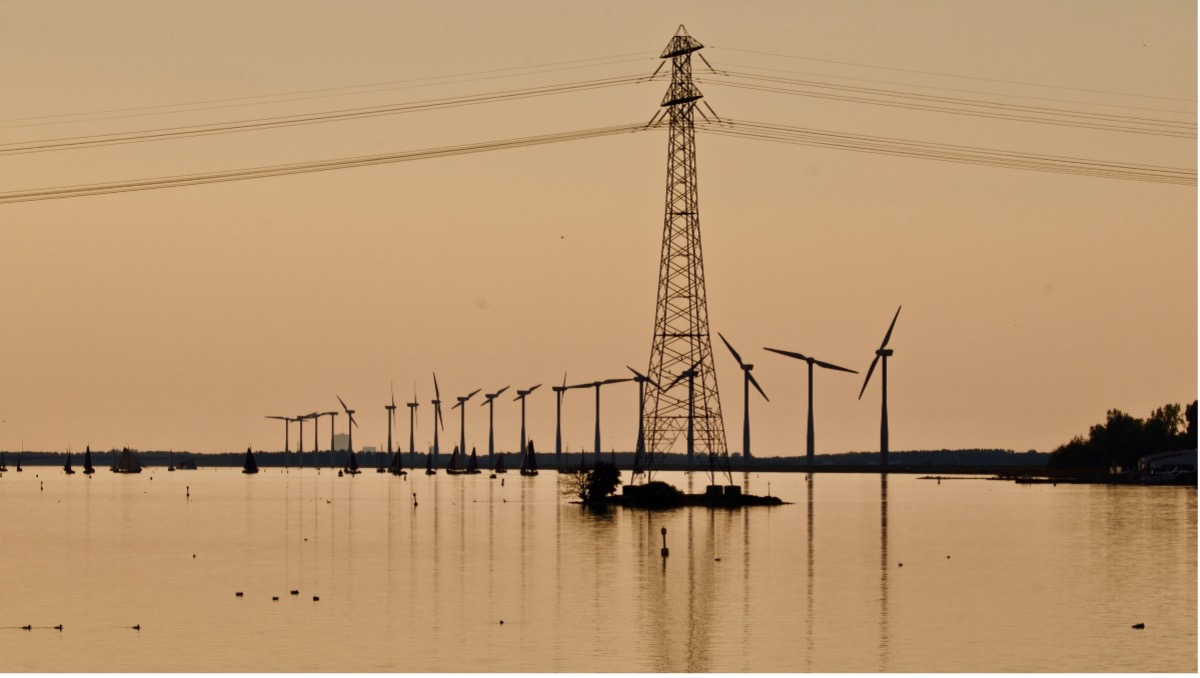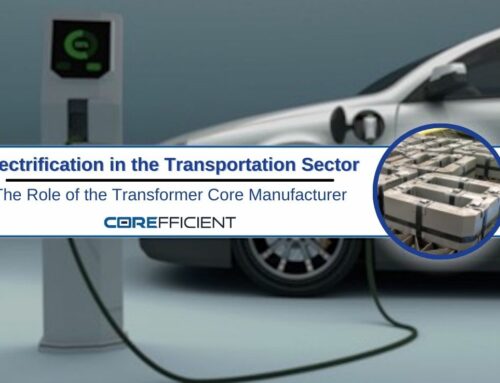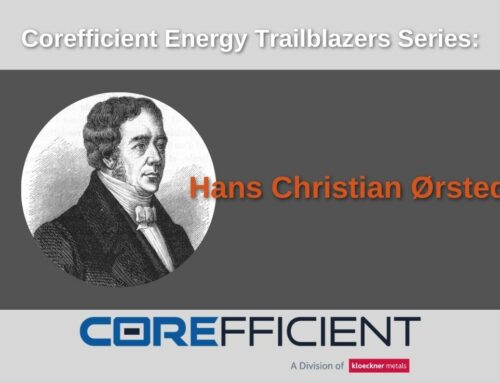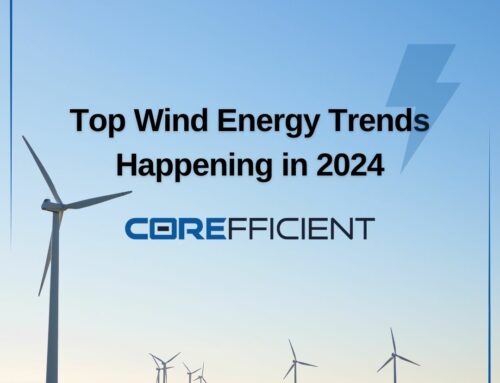
The world’s energy needs are growing, but the planet’s energy resources are finite and must be accessed through a sophisticated energy infrastructure. Our energy choices become increasingly crucial as population growth, industrialization, and development rates increase. Health, education, political influence, and social standing are all impacted by access to energy. We can use our natural resources sustainably and raise everyone’s quality of life if we increase our energy efficiency. All the more reason to watch for Energy Trends in 2023 and beyond.
Growing production of sustainable energy components has struggled with supply chains, but better domestic access can reduce bottlenecks. Renewable providers should have more opportunities thanks to new clean hydrogen economics. The Inflation Reduction Act (IRA), which strongly emphasizes encouraging renewable energy providers to pursue opportunities in low-income neighborhoods, has opened new avenues for advancing energy justice. Cyber risk management is increasingly under the spotlight in the renewable energy sector. And the offshore wind is still working to overcome obstacles that could prevent fast expansion.
Strong tailwinds are being created for the renewable energy sector as it enters 2023 by rising demand and attractive, long-term incentives. Still, some of the same headwinds the industry faced in 2022 may temper this momentum. Explore the energy market trends that could help resolve these issues and boost GDP over the long term.
Supply may get easier as the production of clean energy components increases chain snags with time.
US manufacturing cannot produce the domestic supply chains necessary for the renewable energy sector to obtain clean energy components. But IRA incentives have already introduced new plants and considerable investment, and this trend is set to continue beyond 2023.
One objective of the IRA is to encourage domestic manufacturing to create and secure supply chains for these clean energy components and eventually achieve cost competitiveness through economies of scale. Important clauses include:
- Production of advanced manufacturing. Tax credits for the local manufacture and sale of certified solar and wind energy components, including inverters, battery cells, PV wafers, cells, modules, wind turbine blades, nacelles, and towers, as well as a 10% credit to produce certain vital minerals.
- Competent and sophisticated energy project. For a new class of tasks, re-equipment, expansion, or construction of qualified domestic manufacturing or industrial facilities that aid in the production or recycling of renewable energy property, tax credits of 6% or 30% will be offered.
- Localized material. If a project uses specified parts made in the US, it may be eligible for additional tax credits over and above the base investment tax credit.
Two of the biggest solar panel producers are establishing supply chains from raw materials to finished modules, building new facilities, and expanding current ones. And numerous battery manufacturers, most of whom are currently concentrating on EV batteries, have announced plans for new US facilities. One count (Forbes online magazine) determined that roughly $28 billion in new industrial investments in the solar, battery, and EV manufacturing industries had already been reported two months following the bill’s implementation. While this may be excellent news for renewable energy supply chains in the long run, many anticipate at least a few more years of difficulties.
Another energy market trend, new clean hydrogen economics may present opportunities for renewable energy producers.
Approximately 10 million metric tons of hydrogen are needed annually in the US. It is mainly utilized in manufacturing ammonia, food, pharmaceuticals, and other industrial activities, as well as refining and processing oil and petrochemicals. Only 1% of hydrogen is “green,” produced from electrolyzing renewable (or other low carbon) electricity and water. About 99% of hydrogen is gray hydrogen, typically made through natural gas steam methane reforming.
The use of green hydrogen is becoming more popular in the industrial sectors of distribution of natural gas, electric power, and transportation, although frequently, new, or updated infrastructure is required. The $8 billion investment in regional clean hydrogen hubs from the Infrastructure Investment and Jobs Act (IIJA) can assist in addressing the need for additional market and ecosystem development. As cost reductions from co-location can improve project economics, interest is already developing in participating in hydrogen and other low-carbon hubs.

Steps in improving energy market trends.
The new tax credit provides economics that could boost the renewable energy industry in the short term, despite issues that may require longer-term remedies. Here are some possibilities the sector can consider in 2023 and beyond.
- Install electrolyzers close to existing consumers of gray hydrogen, where there is already a market for the fuel and where industrial users may welcome the chance to decarbonize fuel.
- Utilize electrolyzers to generate electricity from renewable sources; use the proceeds from the sale of clean hydrogen to expand the usage of renewable resources.
- Connect electrolyzers to the grid and utilize them as variable loads to help balance the grid by pulling electricity from renewable sources when output is high, prices are low and ramping down when the result is standard so that the power can be used to satisfy the grid needs. In some markets, getting paid for supplying flexible loads can help cover the costs of producing hydrogen.
IRA encourages renewable energy producers to investigate opportunities in low-income areas, helping energy market trends.
Up until now, the renewable energy shift has been chiefly concentrated on well-off Americans, who have benefited from incentives like tax credits for rooftop solar or EVs. At the same time, many low-income neighborhoods were left behind. But as federal policy with environmental justice measures may further encourage renewable developers to expand into these regions, outreach to low-income communities could speed up in the upcoming year.
Low-income households in the US make up around 44% of all families, and they may stand to gain the most from clean energy savings because their 8.6% “energy burden,” or the portion of income spent on energy, is about 3.5 times higher than the national average and can reach 30%. In low-income areas, business models like community solar are anticipated to expand quickly because they may be able to provide customers with more dependable, cheaper rates, increase their sense of financial security, improve local air quality, and create jobs. Community solar schemes tailored to low- and moderate-income customers are available in 23 states.
For many years, low-income areas have had access to clean energy initiatives given by some states and utilities. However, rising electricity costs, a tripling utility debt since 2019, and a growing emphasis on environmental justice have made the situation more urgent. For instance, clean energy projects eligible for the IRA’s 30% investment tax credit can add a 10% or 20% bonus credit if situated in an “environmental justice” area. The Biden administration established the Justice40 Initiative in January 2021 to deliver 40% of the overall benefits of federal climate and clean energy investments to “disadvantaged communities that are marginalized, underserved, and overburdened by pollution.”
The growing cyber risk is a primary concern for the renewable energy sector and the energy market.
The growing frequency of cyberattacks against the renewable energy sector indicates that it is maturing. Cyberthreats are anticipated to increase in 2023 and beyond as the clean energy transition advances, concentrating on utility-scale and distributed renewable energy resources. Additionally, the sector is getting ready for the growing number of dispersed, frequently digitally controlled, aggregated energy resources held by third parties connected to the grid, almost half of which are solar energy systems. An increasing shortage of qualified cybersecurity talent is projected to lead utilities and renewable energy providers to continue staffing up their cybersecurity teams.
Research evaluating the dangers to the electric grid posed by the ongoing development of distributed energy resources was just published by the US Department of Energy (DER). Currently, the United States has about 90 GW of DER deployed, including more than 3 million solar panels. By 2025, the deployment of DER is anticipated to triple to nearly 380 GW. This could pose serious difficulties because DER is frequently connected to the internet and are subject to few, if any, cybersecurity regulations.
A fleet of hundreds of thousands of DER aggregators might be used to manage substantial amounts of power. The Critical Infrastructure Protection (NERC-CIP) standards of the North American Electric Reliability Corporation, which are required for other resources on the bulk electric system, do not currently apply to these institutions. The bulk power system’s aggregated DER involvement has specific risks, and NERC collaborates with stakeholders to develop a strategy for implementing the necessary security controls to minimize those risks.

Overcoming obstacles to enable rapid expansion in the offshore wind industry.
The US offshore wind project pipeline reached more than 40 GW of potential generating capacity spread among 12 states. Currently, just 42 megawatts (MW) of power are in operation, 1 GW is being built, and about 19 GW are still in the permitting stage. It will likely take several more years to produce the other 20 GW, which are currently in the siting and planning stages. However, overcoming obstacles to enable that expansion could be crucial in the coming years.
State procurement laws play a significant role in offshore wind development in the US. By 2040, nine states intend to deploy over 45 GW of capacity together, and additional states are considering following suit. Together, they can contribute to the administration’s plans to build 15 GW of floating offshore wind power by 2035 and 30 GW of onshore wind capacity by 2030. Funding and tax benefits in the IIJA and IRA may further support these objectives. The industry is anticipated to be addressing some fundamental difficulties in 2023 as some of the initial projects progress, including:
- Financing and construction risk
- Transmission and grid upgrades
- Vessels and port infrastructure
- Local manufacturing and workforce
Regardless of challenges, energy market trends are on the rise.
In 2023 and beyond, the energy industry will continue to address these issues. It is anticipated to gain from growing scale, well-capitalized investors, international experience, regional cooperation, and federal incentives and financing.
The energy sector is anticipated to keep increasing and growing in 2023, tapping into fresh prospects made possible by IRA incentives such as clean hydrogen production and low-income area solar initiatives. It is also anticipated that as it increases its market share, it will concentrate more on minimizing the dangers that come along with it, such as cybersecurity. As the industry enters 2023, substantial tailwinds are being produced by rising demand and attractive, long-term incentives, but there is still some turbulence to navigate through.
Since only the most fantastic transformer core production provides value for future generations, we at Corefficient are essential to staying ahead of energy innovation curve. We make it our top priority to remain informed on the most recent energy market trends and advancements throughout the world. We continuously innovate and improve the electrical transformer cores we produce to give our customers a competitive edge. By making sure that we have the best and most cutting-edge tools and knowledge, we can continue to deliver the very best energy efficient transformer cores.
More about Corefficient:
Our state-of-the-art, ISO-9001-certified center in Monterey, Mexico, houses a group of knowledgeable specialists who work tirelessly to provide you with first-rate support across North America.
Corefficient has worked hard to develop since 2016 and now offers high-performance electrical transformer cores with first-rate customer support. We provide increased core efficiency based on material choices, manufacturing techniques, and geometries. Check out our services for transformer cores!
Visit our website or call 1 (704) 236-2510 to speak with a Corefficient sales engineer immediately.





